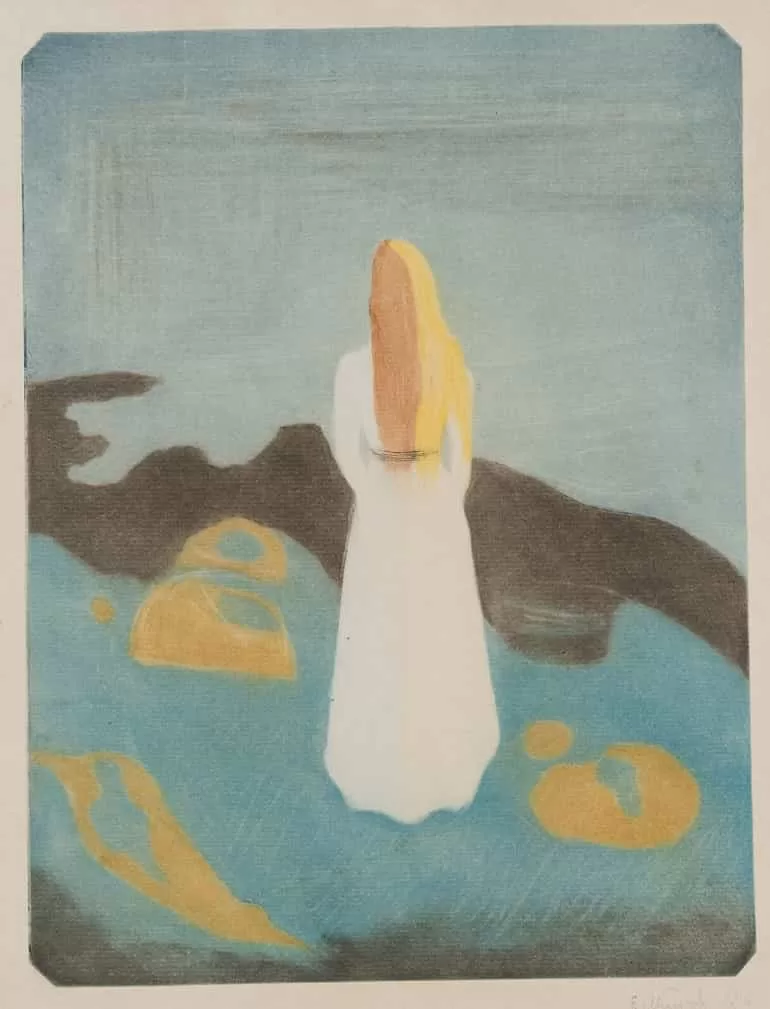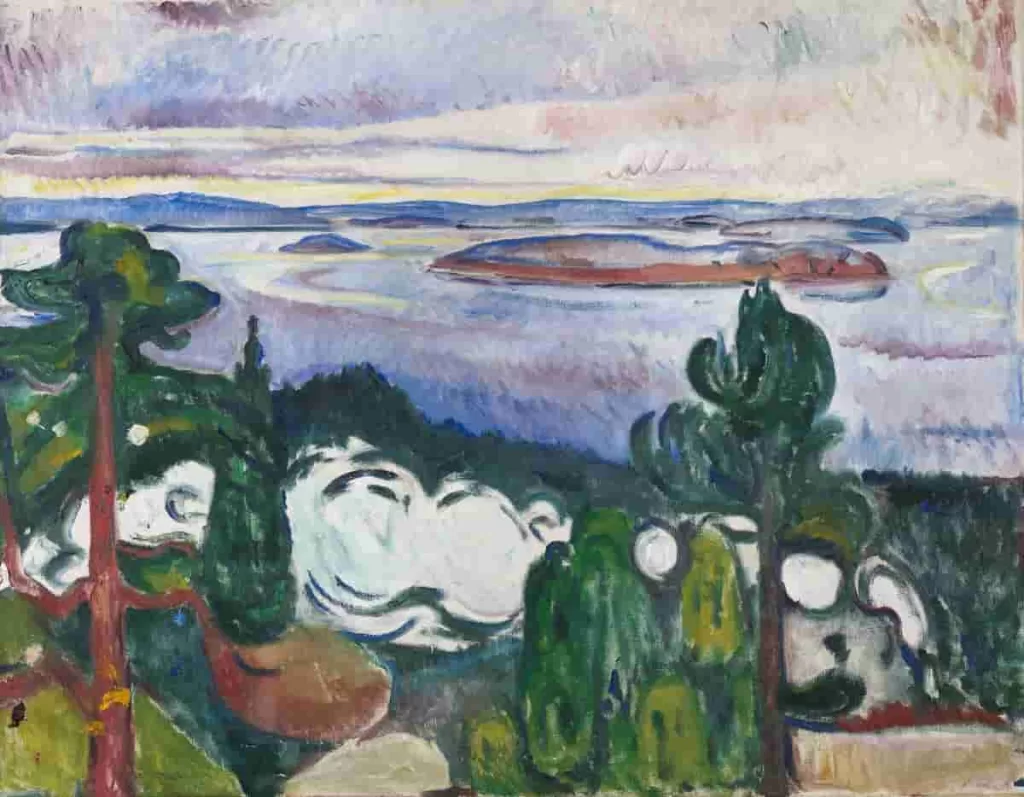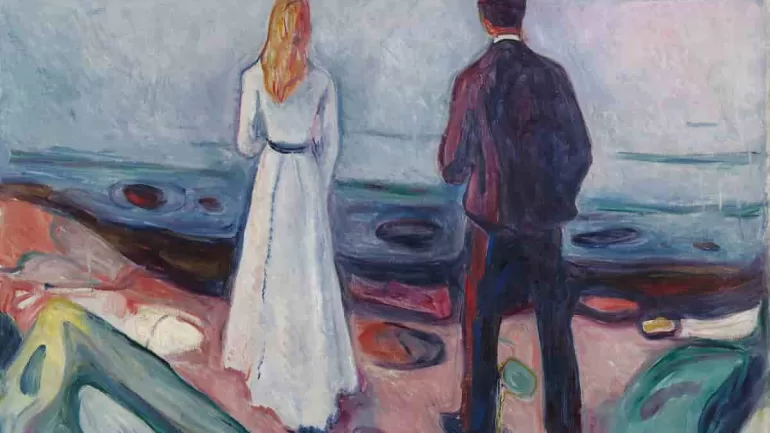ART NEWS
The Edvard Munch art donation to the Harvard Art Museums art collections by Philip and Lynn Straus is a cultural treasure that will benefit the art world.
BY KAZEEM ADELEKE, ARTCENTRON
The Harvard Art Museums has announced an extraordinary gift from the collection of Philip A. and Lynn G. Straus. This significant donation includes sixty-two prints and two paintings by renowned Norwegian artist Edvard Munch. This bequest marks a poignant chapter in the Straus family’s lasting legacy. It emphasizes their deep passion for Munch’s exploration of human emotion and psychology.
The collection offers a comprehensive view of Munch’s artistic evolution and his profound engagement with themes of isolation, anxiety, and desire. It is a testament to the Strauses’ long-standing admiration for the artist, whose work continues to resonate with audiences worldwide.
The extraordinary story of the Straus family’s connection with the art world and their exceptional collection of Edvard Munch’s works is intriguing. It provides a fascinating narrative of how personal passion for art intersects with philanthropy. In 1969, New York couple Philip and Lynn Straus marked their 20th wedding anniversary by acquiring Salome, a lithograph by Norwegian artist Edvard Munch. This piece, created in 1903, became the cornerstone of a collection now hailed as one of America’s premier compilations of Munch’s art.
The Significance of the Salome Lithograph in Munch’s Oeuvre
The acquisition of Salome in 1969 marked the beginning of an artistic journey that profoundly shaped the Straus collection. This lithograph, printed in black ink on yellowish Japanese paper, depicts a couple merging into a single entity. The piece is an iconic example of Munch’s exploration of relationships and the tension between individual identity and emotional intimacy. The symbolism in Salome is rich, reflecting the complex dynamics of desire, separation, and unity. Its powerful imagery captivated the Strauses and initiated their deep dive into Munch’s world.
In many ways, Salome encapsulates the recurring themes found throughout Munch’s work: isolation, yearning, and the inner turmoil of the human condition. These elements would become the driving forces behind the Straus’s continued collection, which spanned several decades.
A Deepening Connection to Edvard Munch’s Art
Philip and Lynn Straus’s commitment to collecting Munch’s works extended far beyond acquiring individual pieces. Over the years, they assembled a comprehensive collection that many in the art world find impressive. The collection includes key paintings, lithographs, and etchings that traced Munch’s development as an artist. Their collection spans various periods in Munch’s career. It offers an unparalleled look at his evolution from the 1890s through the early 20th century.
One of the standout pieces of this collection is Two Human Beings (The Lonely Ones). This is a motif that Munch explored in multiple variations. The collection includes six iterations of this subject, including a striking oil-on-canvas painting from 1906–1908. There are also five corresponding works on paper. The painting features a man and a woman, each isolated from the other and staring into the abyss of the sea. The artwork encapsulates Munch’s profound meditation on loneliness, alienation, and unrequited love.
The Loneliness of Munch’s Subjects: A Powerful Theme

What makes the Straus collection particularly remarkable is the inclusion of multiple versions of Two Human Beings (The Lonely Ones). Munch’s ability to capture the raw emotional experience of isolation and longing is evident across different mediums, from etchings to heavily colored woodcuts. According to Elizabeth Rudy, curator of prints at Harvard Art Museums, each of these works is unique. According to her, despite their formal similarities, they present a distinct interpretation of the same emotional core.
This emphasis on human isolation was central to Munch’s oeuvre, and the Straus collection provides a rare opportunity to study the artist’s nuanced exploration of this theme in great depth. The prints, spanning from the mid-1890s through the 1910s, offer a fascinating comparison of the artist’s evolving technique and emotional range.
Preserving Munch’s Masterpieces: The Conservation Process
The two oil paintings in the Straus gift, including the famous Train Smoke (1910). It recently underwent rigorous conservation treatments at the Straus Center for Conservation and Technical Studies at Harvard. Philip Straus, Jr., son of the late couple, reveals that these paintings were an integral part of his childhood home in Mamaroneck, New York, where they were prominently displayed. This connection between the family and the works of art emphasizes the personal relationship the Strauses had with Munch’s creations. They viewed these artworks not just as investments or collectibles but as vital parts of their daily lives.
Revealing New Insights: The Technical Examination of Train Smoke
An in-depth technical examination of Train Smoke revealed surprising findings. They include the discovery that a faded area in the foreground, originally a rich red, has now lightened to near white. These findings add to the historical understanding of Munch’s technique and materials. Additionally, they provide further insight into his artistic process and how his work has changed over time.
This research underscores the importance of conserving such priceless works. Each new discovery can significantly alter the way scholars and art enthusiasts understand the artist’s intentions and craftsmanship. As one of the leading conservation centers in the world, the Straus Center plays an important role in preserving these masterpieces for future generations.
Train Smoke by Edvard Munch in Harvard Art Museums

The Straus Family’s Continuing Legacy at Harvard Art Museums
The gift of 64 Munch works to Harvard Art Museums is not the first contribution made by the Straus family to the institution. Their relationship with Harvard dates back several decades. It includes notable donations, such as a $7.5 million gift to support the training and research of the Straus Center for Conservation and Technical Studies. These contributions reflect the Straus family’s deep commitment to advancing art scholarship and conservation practices.
The Harvard Art Museums, which house the Busch-Reisinger Museum, the Fogg Museum, and the Arthur M. Sackler Museum, are fortunate to benefit from the Straus’s generosity. With this latest bequest, the museums now have an unparalleled collection of Munch’s works. This allows for an in-depth exploration of his most iconic motifs.
The Importance of Munch’s Art for Modern Audiences
Edvard Munch’s exploration of human emotion continues to resonate with contemporary audiences. His works are as relevant today as they were when they were first created. They deal with universal themes of love, despair, and isolation. The Straus collection offers a rich trove of insights into Munch’s artistic journey. More importantly, it allows future generations of scholars, curators, and art lovers to appreciate the depth of his emotional and psychological explorations.
Edvard Munch’s Legacy in the Art World
Munch’s ability to communicate profound emotional truths through art, often using innovative techniques and expressive color palettes, makes him one of the most influential figures in the history of modern art. His masterpieces, such as The Scream, continue to be iconic symbols of human anxiety and alienation. Through the Straus collection, Munch’s works will continue to inspire and challenge future generations.
A Lasting Gift to the World of Art at Harvard Art Museums
The gift of 64 Munch works by Philip and Lynn Straus to Harvard Art Museums is not just a personal legacy—it is a cultural treasure that will benefit the art world for generations to come. These masterpieces offer a unique and comprehensive glimpse into one of the most important figures in modern art. The meticulous care with which they were collected and conserved ensures that their impact will endure.
This remarkable collection not only enriches the holdings of the Harvard Art Museums but also ensures that future generations will have access to a pivotal body of work that shaped the landscape of modern art. Additionally, it provides an invaluable resource for scholars, curators, and art lovers alike. It offers a deeper understanding of Munch’s vision and artistic evolution. The Straus family’s dedication to preserving and sharing these works highlights the power of art to transcend time and place. Above all, it makes Munch’s emotional landscapes as relevant today as ever.
- Featured image: Edvard Munch, Two Human Beings (The Lonely Ones), 1906–8. Oil on canvas. Harvard Art Museums/Busch-Reisinger Museum, The Philip and Lynn Straus Collection Photo: © President and Fellows of Harvard College; courtesy of the Harvard Art Museums
